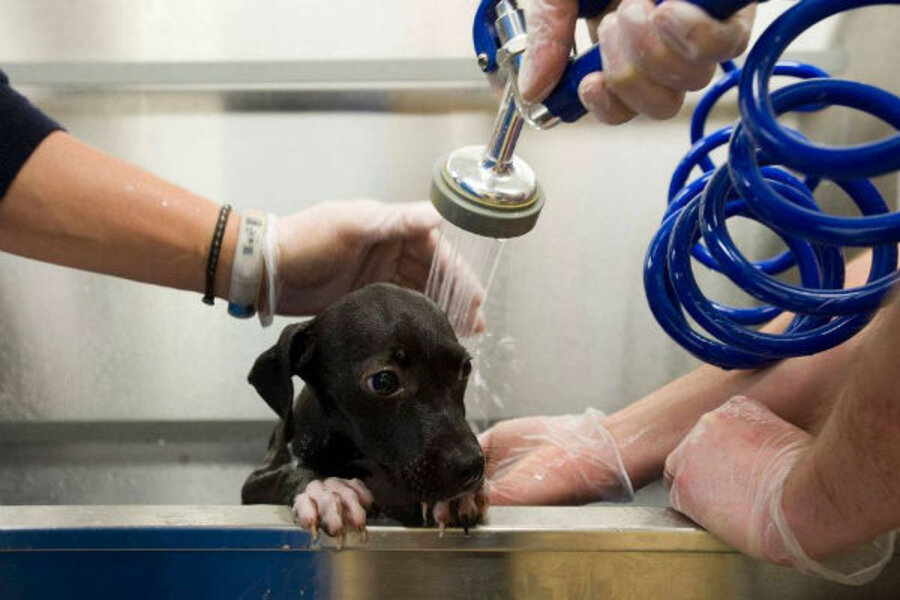'Pint-size philanthropy': Kids swap gifts for donations
Loading...
Eleven-year-old Claire Hall of Cleveland Heights hasn't received a birthday gift since she was 4.
No dolls, toy ponies, hair accessories, Wii games, or any of the usual gift-giving stuff children are used to getting.
That's because every year instead of gifts, Claire asks family and friends to give her pet supplies: food, treats, toys and other items she can donate to the Cleveland Animal Protective League.
"It's a good feeling to do something good," said Claire, whose eight birthday parties have generated countless cans and bags of pet food, treat, toys and the like for the APL. "As long as I have birthdays I'm going to keep doing this."
A growing number of nonprofits say they are being helped by pint-size philanthropists like Claire who are willing to give up their gifts from birthdays, bar and bat mitzvahs and other celebrations to donate to a good cause.
Natalie Leek-Nelson, president and CEO of Providence House in Cleveland, which works to end child abuse and neglect, said children's celebrations that benefit Providence House used to be sporadic. Now they're much more frequent.
"Now in any given year we have 10 to 15 children who do this," said Ms. Leek-Nelson.
Children like 7-year-old Leilah Mizer of Brook Park, who last spring was riding in the car with her mom, Crystal Macfarlane when the two began talking about Leilah's September birthday, and what kind of birthday party the youngster wanted.
"She looked at me and said, 'Mom, I don't really need anything,'" recalls Ms. Macfarlane. "'For my party why don't we have people bring things that we can donate to someone."
Leilah asked party-goers to give to Ronald McDonald House of Cleveland. She was familiar with RMH because one of her teachers volunteered there.
"She was very adamant that nobody give her a gift," Mcfarlane said. "The gifts that she got for herself she wouldn't keep. She gave them to Ronald McDonald House."
Nonprofit representatives aren't really sure why there seems to be a rise in the number of children acting out of kindness. It could be that once a child goes to a friend's party where donations instead of gifts are given, the idea catches on, and word spreads among peers.
Or it could be the save-spend-give method of handling money that more parents are teaching their children, Leek-Nelson said. That is, save some for yourself, spend what you need to and give to a cause that the child feels strongly about.
Sharon Harvey, president and CEO of the Cleveland APL, said many contribution-minded kids are influenced by contribution-minded parents. But not all of them.
"Sometimes these wonderful children don't need prompting," said Ms. Harvey, noting that children over the age of 9 can volunteer at the shelter with a parent.
"She feels like she has enough stuff," said Margaret Hall. "She even gets mad at her friends if they give her presents. She feels bad for the dogs and cats that don't have a home."
Robert Fischer, research associate professor and director of the master's degree program in nonprofit organizations at Case Western Reserve University, said he also sees parents emphasizing to children at an early age the idea of balancing giving with spending.
"Often parents have kids separate jars for spend, save and donate to reinforce these three venues versus everything going to spend," Mr. Fischer said.
Laura Klinger Doyle, communications manager at Ronald McDonald House, said her agency has had "a lot of success" with children who ask that friends and family give money and needed items to that agency instead of gifts.
Ms. Doyle said Leila Mizer raised more than $1,000 online through the online fundraising page they set up on FirstGiving.
For her 9th birthday party, Sydney Brown of Avon asked her friends to bring pet food, treats, and other supplies for the APL. Sydney and her guests hauled the supplies to the animal shelter and received a tour to see how their donations would be used. For her most recent 10th birthday, Sydney asked for money to give to the APL.
"When she said she wanted gifts for the APL for her 9th birthday, I asked her 'Are you sure you want to do this?''', said Sydney's mother Kristy. "I didn't discourage her but I wanted her to be sure. She said yes because she didn't need any more stuff. This was all her idea."





